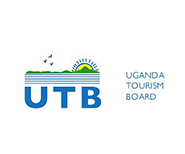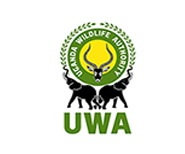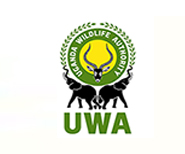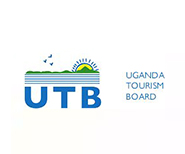While East Africa’s famous parks such as the Serengeti, Maasai Mara, and Bwindi Impenetrable Forest capture much of the limelight, the region is also home to lesser-known national parks that provide equally thrilling wildlife experiences without the crowds.
Here are some hidden gems in Uganda, Rwanda, Kenya, Tanzania, and Burundi that offer exceptional encounters with nature.
1. Kidepo Valley National Park, Uganda
Located in the far northeastern corner of Uganda, Kidepo Valley National Park is one of the most remote and breathtaking parks in East Africa. Nestled between rugged mountains and semi-arid plains, Kidepo is home to over 77 mammal species, including lions, elephants, and rare animals like cheetahs and leopards.
- Highlights: Visitors can enjoy game drives across the park’s vast savannah, take in views of the rugged landscapes, and visit the cultural communities of the Karamojong people. Due to its remote location, Kidepo sees far fewer visitors, making it an ideal spot for solitude and wildlife photography.
- Best Time to Visit: September to March (dry season), when wildlife is easier to spot as animals congregate around water sources.
2. Akagera National Park, Rwanda
Akagera National Park is Rwanda’s only savannah park and a rising star in African conservation. Situated along Rwanda’s eastern border with Tanzania, the park is a mosaic of swamps, lakes, and savannahs, home to lions, elephants, leopards, and black rhinos after successful reintroduction efforts.
- Highlights: Akagera is perfect for traditional game drives as well as boat safaris on Lake Ihema, which provides an opportunity to spot hippos, crocodiles, and a variety of waterbirds. The park is also less crowded than many of East Africa’s other destinations, offering a more peaceful safari experience.
- Best Time to Visit: June to September (dry season), which makes it easier to spot animals.
3. Bururi Forest Nature Reserve, Burundi
Although small in size, Bururi Forest Nature Reserve is a hidden treasure in Burundi. Located in the country’s southern highlands, this rainforest reserve is rich in biodiversity, offering shelter to 93 species of mammals, 200 species of birds, and a wide array of flora.
- Highlights: The reserve is a paradise for birdwatchers, with species such as the Great Blue Turaco and Black-and-white-casqued Hornbill often seen. It also provides serene hiking trails through dense forests, where travelers can enjoy the peaceful surroundings and spot colobus monkeys.
- Best Time to Visit: May to October, when the weather is cooler and drier, making trails easier to navigate.
4. Sibiloi National Park, Kenya
Located on the northeastern shore of Lake Turkana, Sibiloi National Park is a UNESCO World Heritage Site, often referred to as the “Cradle of Mankind” due to the rich fossil discoveries made there. This remote and desolate park is also home to a variety of wildlife, including Grevy’s zebras, oryx, and Nile crocodiles.
- Highlights: Visitors can explore the park’s archaeological sites, which have unearthed fossils of early hominids and extinct animals. The rugged landscape and vast expanse of Lake Turkana also make for spectacular scenery.
- Best Time to Visit: December to March, when the weather is cooler and access to the fossil sites and lake shore is easier.
5. Mahale Mountains National Park, Tanzania
Located on the eastern shore of Lake Tanganyika, Mahale Mountains National Park is one of Tanzania’s most stunning yet least visited parks. It’s famous for its population of chimpanzees and its untouched, dramatic landscapes of rainforest-covered mountains plunging into the lake.
- Highlights: Mahale offers a rare opportunity for chimpanzee trekking, where visitors can observe these intelligent primates in their natural habitat. The park also boasts some of Africa’s most beautiful beaches along Lake Tanganyika, perfect for swimming, kayaking, and relaxing.
- Best Time to Visit: July to October, which is the best period for chimpanzee trekking due to dry weather and increased visibility.
6. Mount Elgon National Park, Uganda
Straddling the border between Uganda and Kenya, Mount Elgon National Park is an underrated treasure for adventure lovers. The park is centered around Mount Elgon, an extinct volcano that was once Africa’s highest peak, with stunning landscapes ranging from lush montane forests to waterfalls and caves.
- Highlights: The main attraction is trekking to the summit of Mount Elgon, where travelers can explore the caldera, waterfalls, and ancient caves used by elephants to mine salt. The park is also home to diverse wildlife, including blue monkeys, hyenas, and the endangered Jackson’s hartebeest.
- Best Time to Visit: June to August and December to March (dry seasons), which offer the best hiking conditions.
7. Rumanyika-Karagwe National Park, Tanzania
Recently established in northern Tanzania near the border with Uganda and Rwanda, Rumanyika-Karagwe National Park is one of Tanzania’s newest and most off-the-beaten-path parks. The park is a haven for wildlife, including elephants, lions, leopards, and various primates.
- Highlights: Rumanyika-Karagwe is ideal for travelers looking for an authentic wilderness experience. The park’s diverse landscapes, including lakes, rivers, and woodlands, are perfect for game drives and birdwatching. Its remote location guarantees few visitors, allowing for intimate wildlife encounters.
- Best Time to Visit: June to September, during the dry season for better access to remote areas.
Planning Your Adventure?
Whether you’re seeking chimpanzee trekking in remote rainforests, exploring ancient fossil sites, or enjoying the tranquility of savannah landscapes, East Africa’s lesser-known national parks offer unforgettable experiences.
If you’re planning a journey to these hidden gems, be prepared for rugged conditions and fewer amenities—but also for some of the most rewarding adventures in Africa. Paanvuu Safaris can organize tailor-made safaris, guided tours, and all logistics to make your East African exploration seamless and memorable. Reach out to us at [email protected] for expert planning and guidance.







